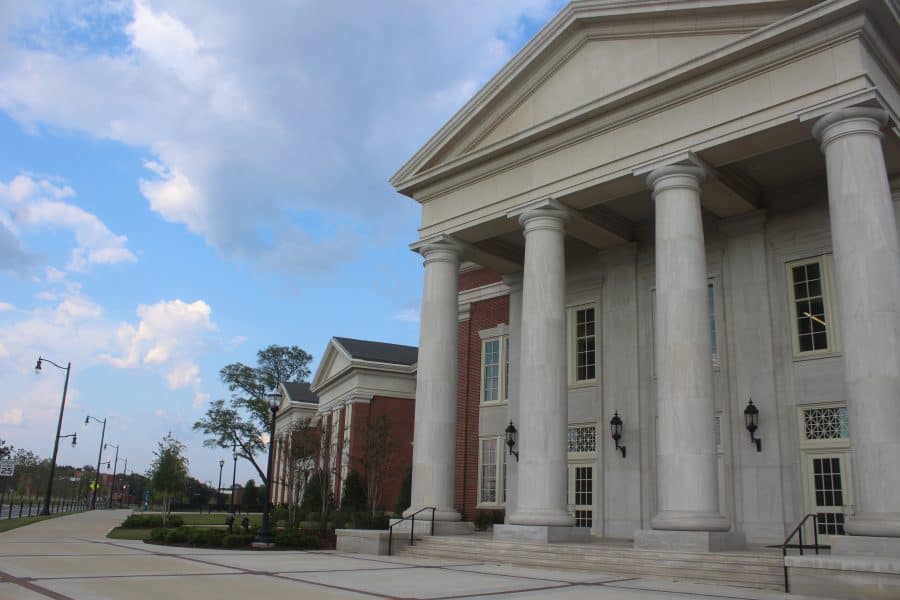The University of Alabama’s budget reveals a university that has been mostly successful in their financial endeavors and has a steady cash flow from their donor base. In fiscal year 2016, which goes through Sept. 30, the University invested their time and money into multiple ventures throughout campus and increased their net position from the year prior.
With a solid financial standing, the University has not feared spending money on new facilities and services that they believe will benefit the students.
In fiscal year 2016, the University spent $117.2 million in capital asset expenditures. Of this, the priciest expenditures were related to contributions to student organizations, totaling around $39.5 million.
Construction of North Lawn Hall, a new academic facility and work on Peter Bryce Boulevard and North Campus Way made up the second and third largest University expenditures, totaling a combined $38.5 million.
Sewell-Thomas Baseball Stadium, which was the largest expenditure by the University in the year prior, still used up $12.3 million, almost an $11 million decrease.
A couple of the many reasons the University has had money to spend is due to increased time in the national spotlight, combined with a solid donor base. The more The University of Alabama expanded their national brand, the more the number of out-of-state students — who pay more for tuition — began to increase.
Now, with over 50 percent of the population coming from outside of Alabama, along with tuition increases, the University made close to $700 million off of tuition and fees in fiscal 2016.
The academic and athletic success of the University has also lead to an increase in endowments. The school’s rise as the fastest-growing flagship university is partially due to these contributions. Since 2009, the market-value of endowments received by the University has increased by almost $200 million. Forty-four percent of these endowments went towards scholarships and fellowships, another 31 percent towards instruction, 17 percent towards institutional support and 2 percent went towards other areas, in 2016.
“With a continual commitment to excellence, we expect funding given by the University’s generous donors will continue to grow, leveraging those gifts for the benefit of our students for many years to come,” the report reads.
The increase in money donated by alumni and other donors is an encouraging factor not only for students at the Capstone, but for parents as well. Terri Jones, who has sent three kids to school at UA, is excited for the direction the University is headed.
“The campus looks so different than it did only a short time ago,” Jones said. “Watching this University change over the course of the time my daughters have been there has been very exciting.”
Another noteworthy expenditure orchestrated by the University includes the approval for the construction of a Mal Moore Dining Facility, which would serve as the main dining hall for athletes. Designs have also been approved for a new Adapted Athletics facility. The two projects will cost $12 million and $10 million respectively.
According to Forbes Magazine, Alabama’s football team makes close to $100 million a year now.
However, graduate student Joshua Shumate understands the decision.
“I have no issues with the University spending a lot of money on our athletic facilities and our athletes. The football program brings in an enormous amount of money each year, and as long as they are paying for it with non-tuition dollars, I have no problem with it,” Shumate said. “It is my understanding that after the athletic department spending is covered by their revenue, they not only pay for themselves but the University has money for other non-athletic spending and scholarships left over.”
For the 2017 year, The University of Alabama and its other campuses were approved for a combined $4.4 billion budget by The University of Alabama System Board of Trustees. The University operating budget for 2017 is $868 million, a 5 percent increase from 2016. With fiscal year 2017 ending on September 30, a new financial report will be provided by the University for public view.









